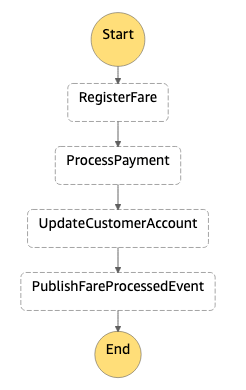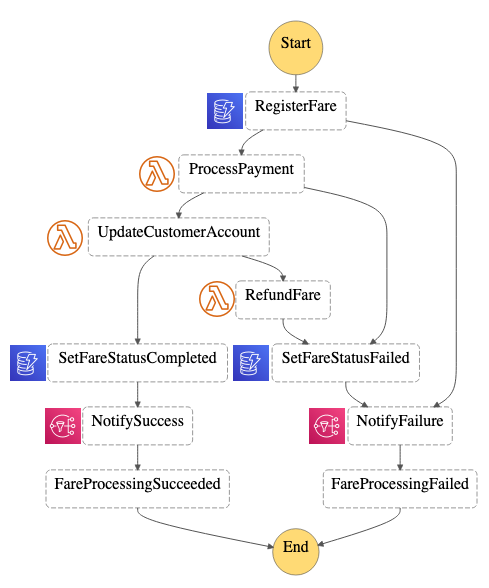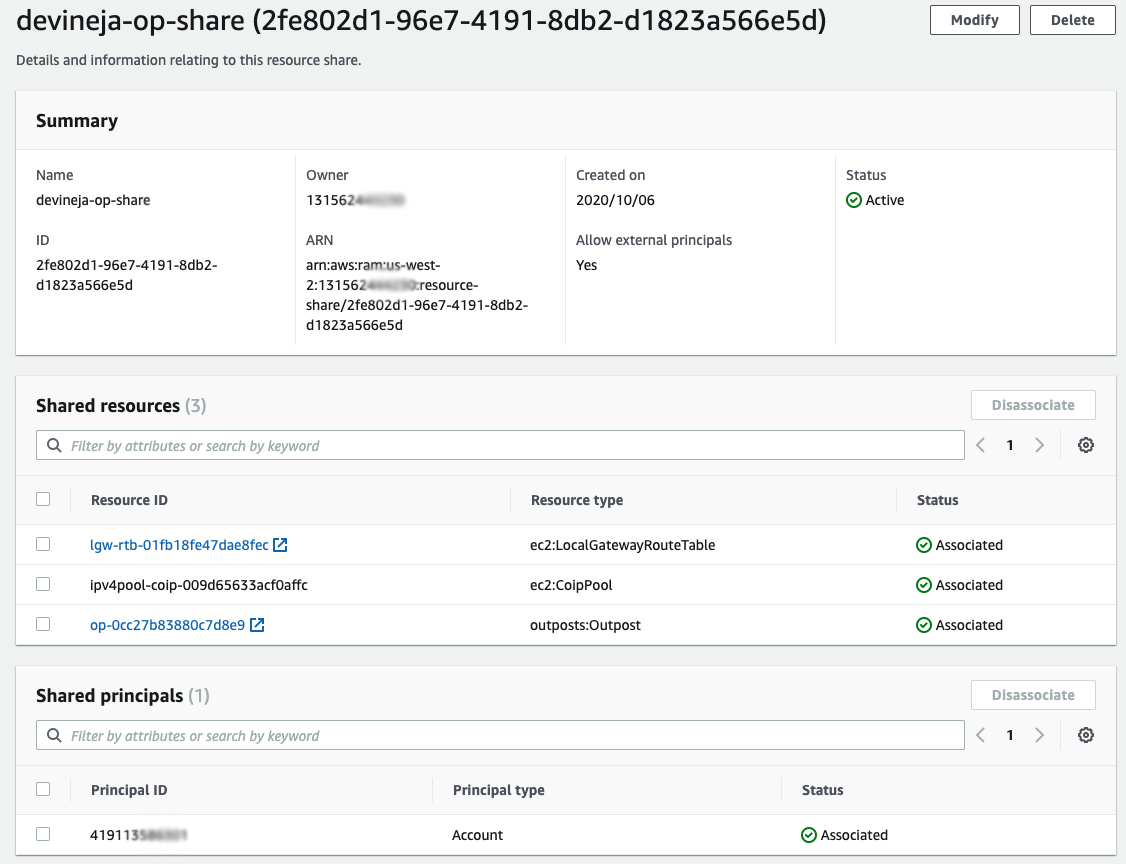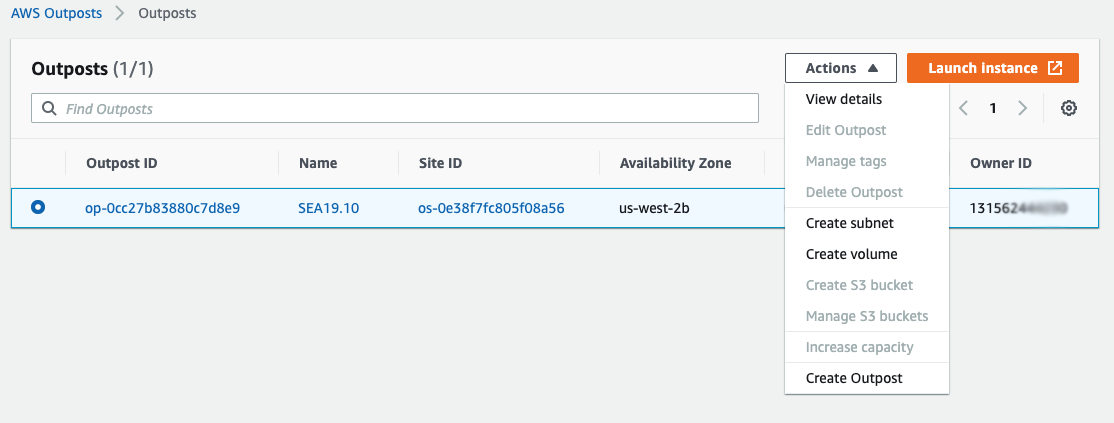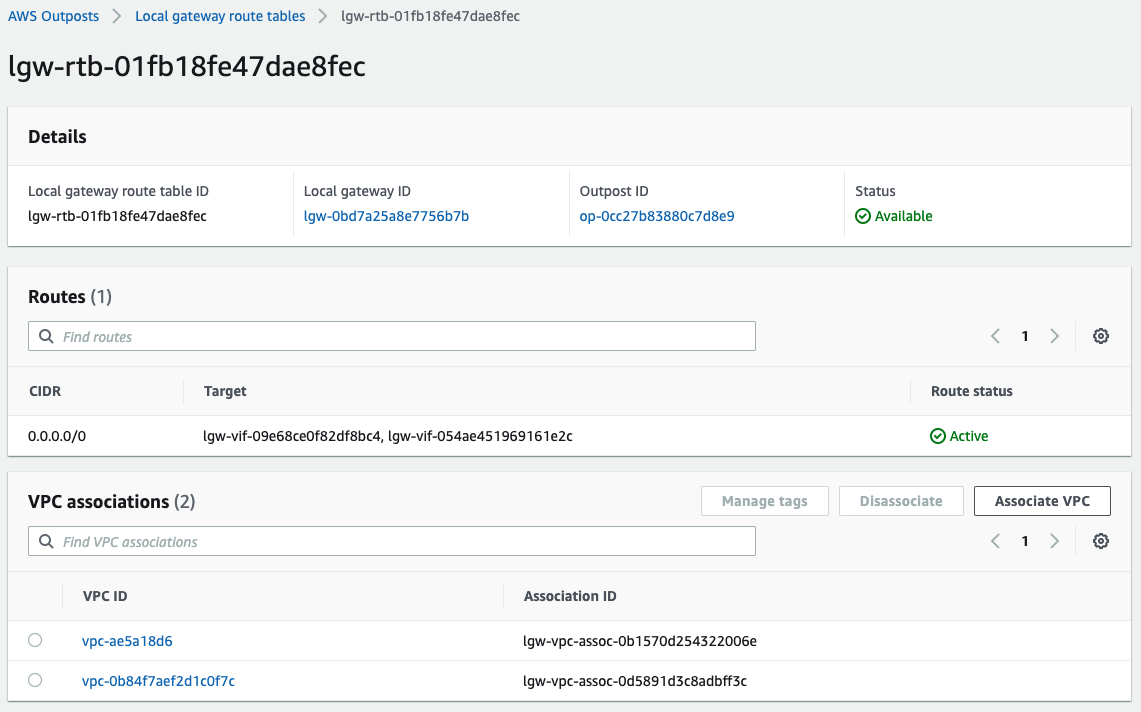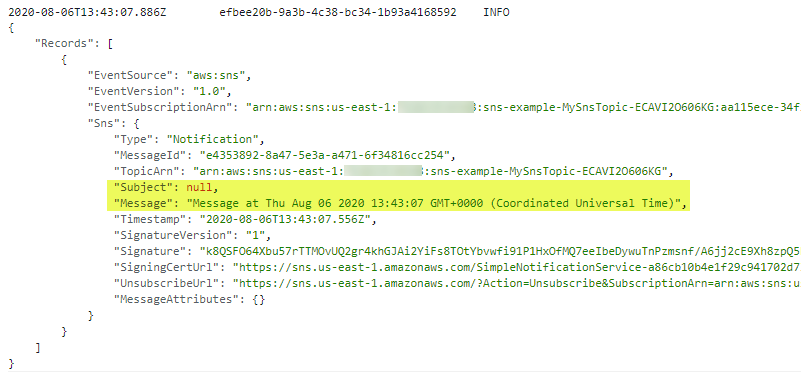Post Syndicated from Brian Farnhill original https://aws.amazon.com/blogs/devops/tightening-application-security-with-amazon-codeguru/
Amazon CodeGuru is a developer tool powered by machine learning (ML) that provides intelligent recommendations for improving code quality and identifies an application’s most expensive lines of code. To help you find and remediate potential security issues in your code, Amazon CodeGuru Reviewer now includes an expanded set of security detectors. In this post, we discuss the new types of security issues CodeGuru Reviewer can detect.
| Time to read | 9 minutes | ||||
| Services used | Amazon CodeGuru |
The new security detectors are now a feature in CodeGuru Reviewer for Java applications. These detectors focus on finding security issues in your code before you deploy it. They extend CodeGuru Reviewer by providing additional security-specific recommendations to the existing set of application improvements it already recommends. When an issue is detected, a remediation recommendation and explanation is generated. This allows you to find and remediate issues before the code is deployed. These findings can help in addressing the OWASP top 10 web application security risks, with many of the recommendations being based on specific issues customers have had in this space.
You can run a security scan by creating a repository analysis. CodeGuru Reviewer now provides an additional option to get both code and security recommendations for Java codebases. Selecting this option enables you to find potential security vulnerabilities before they are promoted to production, and support users remaining secure when using your service.
Types of security issues CodeGuru Reviewer detects
Previously, CodeGuru Reviewer helped address security by detecting potential sensitive information leaks (such as personally identifiable information or credit card numbers). The additional CodeGuru Reviewer security detectors expand on this by addressing:
- AWS API security best practices – Helps you follow security best practices when using AWS APIs, such as avoiding hard-coded credentials in API calls
- Java crypto library best practices – Identifies when you’re not using best practices for common Java cryptography libraries, such as avoiding outdated cryptographic ciphers
- Secure web applications – Inspects code for insecure handling of untrusted data, such as not sanitizing user-supplied input to protect against cross-site scripting, SQL injection, LDAP injection, path traversal injection, and more
- AWS Security best practices – Developed in collaboration with AWS Security, these best practices help bring our internal expertise to customers
Examples of new security findings
The following are examples of findings that CodeGuru Reviewer security detectors can now help you identify and resolve.
AWS API security best practices
AWS API security best practice detectors inspect your code to identify issues that can be caused by not following best practices related to AWS SDKs and APIs. An example of a detected issue in this category is using hard-coded AWS credentials. Consider the following code:
import com.amazonaws.auth.AWSCredentials;
import com.amazonaws.auth.BasicAWSCredentials;
static String myKeyId ="AKIAX742FUDUQXXXXXXX";
static String mySecretKey = "MySecretKey";
public static void main(String[] args) {
AWSCredentials creds = getCreds(myKeyId, mySecretKey);
}
static AWSCredentials getCreds(String id, String key) {
return new BasicAWSCredentials(id, key);}
}In this code, the variables myKeyId and mySecretKey are hard-coded in the application. This may have been done to move quickly, but it can also lead to these values being discovered and misused.
In this case, CodeGuru Reviewer recommends using environment variables or an AWS profile to store these values, because these can be retrieved at runtime and aren’t stored inside the application (or its source code). Here you can see an example of what this finding looks like in the console:

The recommendation suggests using environment variables or an AWS profile instead, and that after you delete or rotate the affected key you monitor it with CloudWatch for any attempted use. Following the learn more link, you’ll see additional detail and recommended approaches for remediation, such as using the DefaultAWSCredentialsProviderChain. An example of how to remediate this in the preceding code is to update the getCreds() function:
import com.amazonaws.auth.DefaultAWSCredentialsProviderChain;
static AWSCredentials getCreds() {
DefaultAWSCredentialsProviderChain creds =
new DefaultAWSCredentialsProviderChain();
return creds.getCredentials();
}Java crypto library best practices
When working with data that must be protected, cryptography provides mechanisms to encrypt and decrypt the information. However, to ensure the security of this data, the application must use a strong and modern cipher. Consider the following code:
import javax.crypto.Cipher;
static final String CIPHER = "DES";
public void run() {
cipher = Cipher.getInstance(CIPHER);
}
A cipher object is created with the DES algorithm. CodeGuru Reviewer recommends a stronger cipher to help protect your data. This is what the recommendation looks like in the console:

Based on this, one example of how to address this is to substitute a different cipher:
static final String CIPHER ="RSA/ECB/OAEPPadding";This is just one option for how it could be addressed. The CodeGuru Reviewer recommendation text suggests several options, and a link to documentation to help you choose the best cipher.
Secure web applications
When working with sensitive information in cookies, such as temporary session credentials, those values must be protected from interception. This is done by flagging the cookies as secure, which prevents them from being sent over an unsecured HTTP connection. Consider the following code:
import javax.servlet.http.Cookie;
public static void createCookie() {
Cookie cookie = new Cookie("name", "value");
}In this code, a new cookie is created that is not marked as secure. CodeGuru Reviewer notifies you that you could make a correction by adding:
cookie.setSecure(true);This screenshot shows you an example of what the finding looks like.

AWS Security best practices
This category of detectors has been built in collaboration with AWS Security and assists in detecting many other issue types. Consider the following code, which illustrates how a string can be re-encrypted with a new key from AWS Key Management Service (AWS KMS):
import java.nio.ByteBuffer;
import com.amazonaws.services.kms.AWSKMS;
import com.amazonaws.services.kms.AWSKMSClientBuilder;
import com.amazonaws.services.kms.model.DecryptRequest;
import com.amazonaws.services.kms.model.EncryptRequest;
AWSKMS client = AWSKMSClientBuilder.standard().build();
ByteBuffer sourceCipherTextBlob = ByteBuffer.wrap(new byte[]{1, 2, 3, 4, 5, 6, 7, 8, 9, 0});
DecryptRequest req = new DecryptRequest()
.withCiphertextBlob(sourceCipherTextBlob);
ByteBuffer plainText = client.decrypt(req).getPlaintext();
EncryptRequest res = new EncryptRequest()
.withKeyId("NewKeyId")
.withPlaintext(plainText);
ByteBuffer ciphertext = client.encrypt(res).getCiphertextBlob();
This approach puts the decrypted value at risk by decrypting and re-encrypting it locally. CodeGuru Reviewer recommends using the ReEncrypt method—performed on the server side within AWS KMS—to avoid exposing your plaintext outside AWS KMS. A solution that uses the ReEncrypt object looks like the following code:
import com.amazonaws.services.kms.model.ReEncryptRequest;
ReEncryptRequest req = new ReEncryptRequest()
.withCiphertextBlob(sourceCipherTextBlob)
.withDestinationKeyId("NewKeyId");
client.reEncrypt(req).getCiphertextBlob();This screenshot shows you an example of what the finding looks like.

Detecting issues deep in application code
Detecting security issues can be made more complex by the contributing code being spread across multiple methods, procedures and files. This separation of code helps ensure humans work in more manageable ways, but for a person to look at the code, it obscures the end to end view of what is happening. This obscurity makes it harder, or even impossible to find complex security issues. CodeGuru Reviewer can see issues regardless of these boundaries, deeply assessing code and the flow of the application to find security issues throughout the application. An example of this depth exists in the code below:
import java.io.UnsupportedEncodingException;
import javax.servlet.http.Cookie;
import javax.servlet.http.HttpServletRequest;
import javax.servlet.http.HttpServletResponse;
private String decode(final String val, final String enc) {
try {
return java.net.URLDecoder.decode(val, enc);
} catch (UnsupportedEncodingException e) {
e.printStackTrace();
}
return "";
}
public void pathTraversal(HttpServletRequest request) throws IOException {
javax.servlet.http.Cookie[] theCookies = request.getCookies();
String path = "";
if (theCookies != null) {
for (javax.servlet.http.Cookie theCookie : theCookies) {
if (theCookie.getName().equals("thePath")) {
path = decode(theCookie.getValue(), "UTF-8");
break;
}
}
}
if (!path.equals("")) {
String fileName = path + ".txt";
String decStr = new String(org.apache.commons.codec.binary.Base64.decodeBase64(
org.apache.commons.codec.binary.Base64.encodeBase64(fileName.getBytes())));
java.io.FileOutputStream fileOutputStream = new java.io.FileOutputStream(decStr);
java.io.FileDescriptor fd = fileOutputStream.getFD();
System.out.println(fd.toString());
}
}This code presents an issue around path traversal, specifically relating to the Broken Access Control rule in the OWASP top 10 (specifically CWE 22). The issue is that a FileOutputStream is being created using an external input (in this case, a cookie) and the input is not being checked for invalid values that could traverse the file system. To add to the complexity of this sample, the input is encoded and decoded from Base64 so that the cookie value isn’t passed directly to the FileOutputStream constructor, and the parsing of the cookie happens in a different function. This is not something you would do in the real world as it is needlessly complex, but it shows the need for tools that can deeply analyze the flow of data in an application. Here the value passed to the FileOutputStream isn’t an external value, it is the result of the encode/decode line and as such, is a new object. However CodeGuru Reviewer follows the flow of the application to understand that the input still came from a cookie, and as such it should be treated as an external value that needs to be validated. An example of a fix for the issue here would be to replace the pathTraversal function with the sample shown below:
static final String VALID_PATH1 = "./test/file1.txt";
static final String VALID_PATH2 = "./test/file2.txt";
static final String DEFAULT_VALID_PATH = "./test/file3.txt";
public void pathTraversal(HttpServletRequest request) throws IOException {
javax.servlet.http.Cookie[] theCookies = request.getCookies();
String path = "";
if (theCookies != null) {
for (javax.servlet.http.Cookie theCookie : theCookies) {
if (theCookie.getName().equals("thePath")) {
path = decode(theCookie.getValue(), "UTF-8");
break;
}
}
}
String fileName = "";
if (!path.equals("")) {
if (path.equals(VALID_PATH1)) {
fileName = VALID_PATH1;
} else if (path.equals(VALID_PATH2)) {
fileName = VALID_PATH2;
} else {
fileName = DEFAULT_VALID_PATH;
}
String decStr = new String(org.apache.commons.codec.binary.Base64.decodeBase64(
org.apache.commons.codec.binary.Base64.encodeBase64(fileName.getBytes())));
java.io.FileOutputStream fileOutputStream = new java.io.FileOutputStream(decStr);
java.io.FileDescriptor fd = fileOutputStream.getFD();
System.out.println(fd.toString());
}
}The main difference in this sample is that the path variable is tested against known good values that would prevent path traversal, and if one of the two valid path options isn’t provided, the third default option is used. In all cases the externally provided path is validated to ensure that there isn’t a path through the code that allows for path traversal to occur in the subsequent call. As with the first sample, the path is still encoded/decoded to make it more complicated to follow the flow through, but the deep analysis performed by CodeGuru Reviewer can follow this and provide meaningful insights to help ensure the security of your applications.
Extending the value of CodeGuru Reviewer
CodeGuru Reviewer already recommends different types of fixes for your Java code, such as concurrency and resource leaks. With these new categories, CodeGuru Reviewer can let you know about security issues as well, bringing further improvements to your applications’ code. The new security detectors operate in the same way that the existing detectors do, using static code analysis and ML to provide high confidence results. This can help avoid signaling non-issue findings to developers, which can waste time and erode trust in the tool.
You can provide feedback on recommendations in the CodeGuru Reviewer console or by commenting on the code in a pull request. This feedback helps improve the performance of the reviewer, so the recommendations you see get better over time.
Conclusion
Security issues can be difficult to identify and can impact your applications significantly. CodeGuru Reviewer security detectors help make sure you’re following security best practices while you build applications.
CodeGuru Reviewer is available for you to try. For full repository analysis, the first 30,000 lines of code analyzed each month per payer account are free. For pull request analysis, we offer a 90 day free trial for new customers. Please check the pricing page for more details. For more information, see Getting started with CodeGuru Reviewer.




